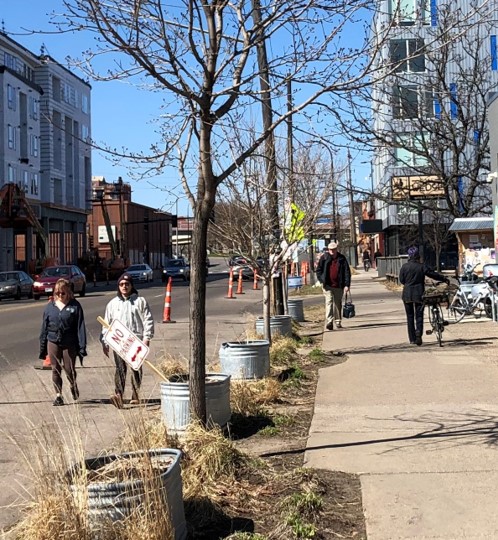FOREWORDRESILIENCY, RACIAL JUSTICE AND REAL-TIME PLANNING
Resiliency
In mid-March 2020, just after the draft TAP was released for public comment, COVID-19 drastically changed the way and the frequency of which people in Minneapolis move. Throughout March and into June, Governor Walz issued Stay Home and Stay Safe orders, limiting what businesses were open and how people worked to prevent the spread of the pandemic. Many people lost their jobs as restaurants, shops, and other sectors of the economy were required to shutter operations by order or due to economic conditions to address the public health emergency. Others began telecommuting, and their commutes to work became non-existent. Transit was reserved for essential trips only, and fares were eliminated. From March to May 2020, car commuters in the region shrank by over half, bike commuters shrank by twothirds and transit commuters shrank by 85%, while telecommuters increased eight-fold.1 The way people used our streets dramatically changed.
We received many comments during the draft review period on the impacts of COVID-19 – praising the City for acting quickly to implement Stay Healthy Streets and eliminate the need to push a button to cross the street as a pedestrian. Commenters implored the City to continue to act as quickly as we did for COVID-19 for climate change and equity goals, and to institutionalize the reduction in vehicular traffic on our streets. Nationally, reductions in greenhouse gases, increased air quality, and increased physical activity have been documented and the same trends were felt in Minneapolis.
The Transportation Action Plan was developed with climate, equity and prosperity as three of its goals. Because of this, many of the strategies and actions in this plan reflect a unified way forward in light of public health crises or other situations which demand the City react quickly to protect street users and serve changing mobility needs.
Quick work during the pandemic was enabled, in part, due to the citywide conversations that occurred at all levels of the City enterprise in the development of the Transportation Action Plan. Having a set of actions in this plan helps the City to be resilient in changing conditions, and keep focused on actions that will advance citywide policy around how our streets contribute to climate, safety, equity, mobility and prosperity goals outlined in this plan.
Several actions have been highlighted due to COVID-19, including ways of looking at our streets as places for people to have more space to walk and bike, and manage the curb in a way that helps manage turnover and increased demand for curbside pickup. Specifically, parts of the actions listed below were experimented with or acted upon since the beginning of COVID-19:



